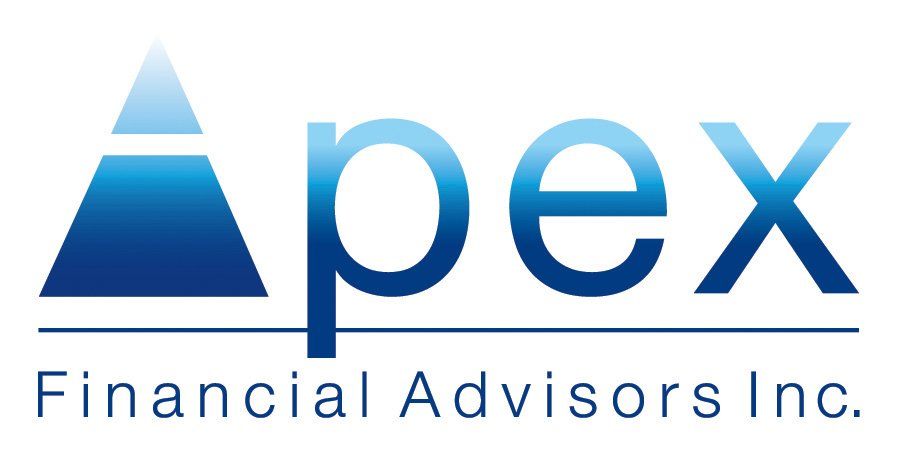Apex News
Know Your Options

If you take required minimum distributions (RMDs) and are charitably-minded, making a qualified charitable distribution (QCD) may make sense for you.
Tax planning is a year-round activity at Apex Financial Advisors. Still, at this time of the year, our team spends a lot of time working with our clients to minimize their tax liability and strategize various gifting opportunities before the year-end comes to a close. We highlighted some of these tax planning strategies in a recent blog post, but let's take a specific look at the options and benefits of a QCD.
How To Minimize Taxable Income Using A QCD
In 2021, the standard deduction is $13,900 ($12,550 stand deduction plus $1,350 over 65 deduction) for single filers and $27,800 ($25,100 standard deduction plus $2,700 over 65) for married couples filing jointly. Given the currently high standard deduction amount and the state and local taxes (SALT) cap at $10,000 for itemized deductions, it's not always easy to benefit from itemizing. But if you meet the requirements, a QCD is an excellent way to maximize your tax efficiency.
Typically, the tax benefit of making charitable gifts is only realized by those who itemize deductions when filing their tax returns – not those who file with a standard deduction. However, when you make a QCD, the distribution is omitted from your adjusted gross income (AGI) upon filing taxes. This means the tax benefit from a QCD can be realized by all individuals – regardless of whether they take the standard deduction or itemize their deductions. This is GREAT news for anyone of RMD age because many taxpayers in that age bracket take the standard deduction.
A QCD is a direct transfer of funds from your IRA custodian payable to a qualified charitable organization. We highlight "direct" since it has to be completed in this manner for the proper tax treatment and "qualified" since the charity has to be included in this searchable database provided by the IRS.
Amounts distributed as a QCD can be counted toward satisfying your RMD for the year, up to $100,000 for a single or $200,000 for joint filers. The QCD is excluded from your taxable income, unlike a regular withdrawal from an IRA, even if you use the money to make a charitable contribution later. So, QCDs reduce your Adjusted Gross Income (AGI), which generally provides a greater tax benefit than claiming the charitable contribution as a tax deduction (and you don't need to itemize).
Why is this distinction important? Taking the RMD as income instead of a QCD, your RMD will count as taxable income. So if you are charitably-minded, you may want to consider making a QCD to eliminate or reduce the impact of RMD income. A direct reduction to your AGI has a ripple effect on your overall tax liability that can yield additional tax benefits:
- A lower AGI may trigger a reduction in taxable Social Security benefits and/or in future Medicare premiums.
- Lowering your AGI can help increase other potential itemized deductions, such as medical expenses or miscellaneous deductions. This is primarily because these deductions must exceed a certain percentage of adjusted gross income before you can count them against your tax liability. Therefore, decreasing AGI creates a lower 'hurdle' before those deductions provide tax savings for you.
- Finally, depending on your state residency, using a QCD to lower your AGI may provide a reduction in your state income tax liability. This is a state tax savings that taxpayers would otherwise not receive in states that do not allow itemized deductions.
What Are The Requirements?
A QCD must adhere to the following requirements:
- You must be of RMD age.
- Limited to $100,000 for single filers and $200,000 for joint filers.
- Funds must be paid directly to the qualified charity from your IRA by the RMD deadline (generally December 31).
- The account types that are eligible for QCDs include:
- Traditional IRAs
- Inherited IRAs
- SEP IRA or SIMPLE IRA (inactive plans only)
- Under certain circumstances, QCDs may be made from a Roth IRA. Roth IRAs are not subject to RMDs during your lifetime, and distributions are generally tax-free.
It is important to note that the IRS has not provided any special reporting requirements for 1099R issuers for QCDs. The 1099R will look exactly like it would have without a QCD. Therefore, it is up to the taxpayer to report the QCD on line 4 of Form 1040. This is done similar to entering a non-reportable rollover by writing "QCD" next to line 4a titled "IRA Distributions" and entering only the non-QCD amount on line 4b titled "Taxable Amount." Please note, the line in which IRA Distributions are reported on your 1040 might change in future years. For the 2020 1040, line 4 was used for IRA Distributions.
It All Starts With A Plan
A review of your unique circumstances, annual tax returns, charitable giving goals, and long-term financial plan should all be reviewed to determine whether a QCD is a good gifting strategy for you.
Our commitment to our clients is to achieve maximum tax efficiency and seek ways to influence your wallet positively and, thereby, your life. If you have any questions about incorporating these techniques into your family's financial plan, don't hesitate to contact our team today. Your financial success is our number one priority.










